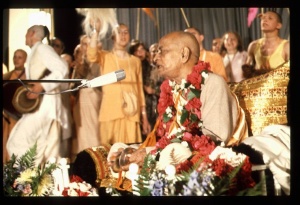CC Adi 10.57: Difference between revisions
No edit summary |
(Vanibot #0054 edit - transform synonyms into clickable links, which search similar occurrences) |
||
| Line 17: | Line 17: | ||
<div class="synonyms"> | <div class="synonyms"> | ||
''sākṣāte'' | ''[//vanipedia.org/wiki/Special:VaniSearch?s=sākṣāte&tab=syno_o&ds=1 sākṣāte]'' — directly; ''[//vanipedia.org/wiki/Special:VaniSearch?s=sakala&tab=syno_o&ds=1 sakala]'' — all; ''[//vanipedia.org/wiki/Special:VaniSearch?s=bhakta&tab=syno_o&ds=1 bhakta]'' — devotees; ''[//vanipedia.org/wiki/Special:VaniSearch?s=dekhe&tab=syno_o&ds=1 dekhe]'' — see; ''[//vanipedia.org/wiki/Special:VaniSearch?s=nirviśeṣa&tab=syno_o&ds=1 nirviśeṣa]'' — nothing peculiar but as He is; ''[//vanipedia.org/wiki/Special:VaniSearch?s=nakula&tab=syno_o&ds=1 nakula] [//vanipedia.org/wiki/Special:VaniSearch?s=brahmacārī&tab=syno_o&ds=1 brahmacārī]'' — Nakula Brahmacārī; ''[//vanipedia.org/wiki/Special:VaniSearch?s=dehe&tab=syno_o&ds=1 dehe]'' — in the body; ''[//vanipedia.org/wiki/Special:VaniSearch?s=prabhura&tab=syno_o&ds=1 prabhura]'' — the Lord’s; ''[//vanipedia.org/wiki/Special:VaniSearch?s=āveśa&tab=syno_o&ds=1 āveśa]'' — symptoms of power. | ||
</div> | </div> | ||
Latest revision as of 18:16, 19 February 2024
Śrī Caitanya-caritāmṛta - Ādi-līlā - Chapter 10: The Trunk, Branches and Subbranches of the Caitanya Tree

His Divine Grace
A.C. Bhaktivedanta Swami Prabhupada
A.C. Bhaktivedanta Swami Prabhupada
TEXT 57
- ‘sākṣāte’ sakala bhakta dekhe nirviśeṣa
- nakula brahmacāri-dehe prabhura ‘āveśa’
SYNONYMS
sākṣāte — directly; sakala — all; bhakta — devotees; dekhe — see; nirviśeṣa — nothing peculiar but as He is; nakula brahmacārī — Nakula Brahmacārī; dehe — in the body; prabhura — the Lord’s; āveśa — symptoms of power.
TRANSLATION
The appearance of Lord Śrī Caitanya Mahāprabhu in every devotee’s presence is called sākṣāt. His appearance in Nakula Brahmacārī as a symptom of special prowess is an example of āveśa.